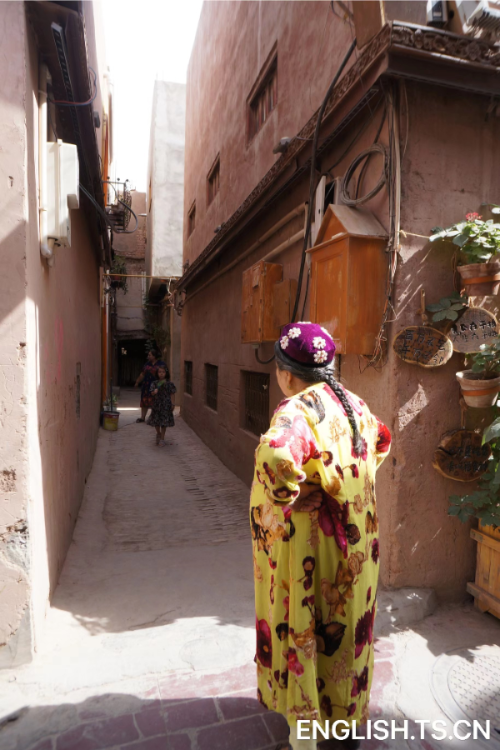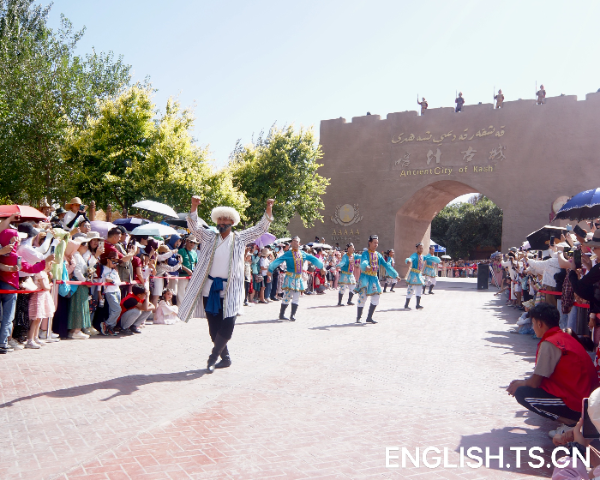Last summer, I embarked on a backpacking trip across various parts of China. Among them, my experience in Xinjiang remains unforgettable to this day. What sets Xinjiang apart is not only its breathtaking landscapes, but also the unique blend of cultural charm, natural beauty, and delectable cuisine. The region’s rich history, traditional culture, and harmonious coexistence of multiple ethnic groups contribute to its diverse cultural tapestry.
The clothing culture in Xinjiang is particularly fascinating. On the streets, I saw many locals wearing embroidered shirts with distinct ethnic characteristics, known as Atlas silk. The people dressed in these exquisite traditional costumes had happy and joyful expressions on their faces, just as the scene depicted by a verse in the Peach Blossom Spring, a masterpiece by Chinese poet Tao Yuanming (around 365-427). The verse goes “All of them, whether old people with white hair or children with their hair tied in a knot, were happy and content with themselves.”

Scenes of such diverse ethnic customs blending together are quite novel to Japanese nationals living in a mono-ethnic country. It made me feel that the various ethnic groups residing in Xinjiang have great respect for their own cultural traditions while also embracing their Chinese national identity harmoniously.
During my train journey from Urumqi to Kashi, I encountered a Uygur family. They introduced me to the beautiful Uygur flower hat “doppa.” It is said that these flower hats come in different styles, with variations for the elderly and children, as well as married women and unmarried girls. I find it similar to our Japanese kimono culture, where the length of kimono sleeves varies by the wearer’s status.

I also discovered that in Xinjiang, people have unique and diverse ways of leisure. In the streets and alleys, you can see people dancing various ethnic dances, playing instruments like dutar and dombra. The beautiful melodies and joyful dances infected me, making me dance along with them. Here, I witnessed the excellent preservation and inheritance of traditional cultures of all ethnic groups in Xinjiang.

It made me realize that these cultural heritages are not only precious treasures for Chinese ethnic groups but also valuable assets in the treasure trove of the Chinese national culture.
Of course, Xinjiang is truly abundant in its culinary delights. The traditional food culture of various ethnic groups who have lived here for generations continues to evolve and innovate on dining tables throughout different eras. From naan bread to lamb skewers, big plate chicken, roasted pumpkin, hand-pulled noodles, and milk tea, Xinjiang has a lot to offer to foodies.
The beautiful scenery, delicious food, harmonious and peaceful lifestyle, and diverse historical culture of Xinjiang make me reluctant to leave. It truly is a lovely place.
Ryoka Yukitake is a Japanese student studying in the College of International Education of Minzu University of China
Planner: Jie Wenjin
Reviewers: Hou Weili and Cheng Li









